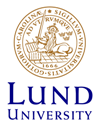Lead development / coordinating university:
- LUND
Prerequisite courses:
- None
- Relevant level of educational achievement in any field
Complementary (subsequent) courses:
- Mass Displacement and the Built Environment
- Occupation-specific courses for Mass Displacement in the Built Environment
Course objectives:
- To understand the context of mass displacement.
- To introduce the terminology, policy and legal frameworks relating to mass displacement.
- To understanding the roles and interests of different organisations and stakeholders involved in mass displacement.
- To understand the societal impacts of mass displacement.
- To introduce best practices in terms of social cohesion and integration.
- To prepare students for industry- and occupation-specific courses.
Key learning outcomes:
Having successfully completed the course, the
student is able to:
- Understand the processes and societal impacts of mass displacement.
- Appreciate the organisations and stakeholders involved in mass displacement and their various interests.
- Communicate and discuss the subject of mass displacement with reference to to appropriate terminology and applicable policy and legal frameworks.
- Understand the issues that face both displaced and host communities and how these can be alleviated.
- Analyse a mass displacement scenario and anticipate problems / issues and recommend solutions to them.
- Lecturer: Mo Hamza
- Lecturer: Chathuranganee Jayakody
Lead development / coordinating university:
- To be determined
Study programme / speciality:
- Rebuilding after displacement / Built Environment specialisations
Prerequisite courses:
- Introduction to Mass Displacement
Complementary (subsequent) courses:
- Occupation-specific courses for Mass Displacement in the Built Environment
Course objectives:
- To explain how mass displacement impacts the Built Environment.
- To introduce the terminology, policy and legal frameworks relating to mass displacement with specific reference to the Built Environment.
- To convey the importance of (temporary, transitional and permanent) housing and explore challenges and opportunities with respect to housing interventions.
- To introduce best practices in relation to Built Environment interventions. (including disaster resilience, environmental susatinability, social cohesion, etc.)
- To prepare students for occupation-specific courses.
Key learning outcomes:
Having successfully completed the course, the
student is able to:
- Understand how mass displacement impacts the Built Environment.
- Communicate and discuss issues using appropriate terminology relating to mass displacement with specific reference to the Built Environment.
- Appreciate the policy and legal frameworks that apply to mass displacement with specific reference to the Built Environment.
- Analyse
a mass displacement scenario and anticipate Built Environment-related problems
/ issues and recommend solutions to them.
- Lecturer: Nishara Fernando
Lead development / coordinating university: Study programme / speciality: Prerequisite courses: Complementary (subsequent) courses: Course objectives: Key learning outcomes:
Having successfully completed the course, the
student is able to:
- Lecturer: Chathuranganee Jayakody
Lead development / coordinating university:
- UCLAN / TUT
Study programme / speciality:
- Rebuilding after displacement / Built Environment specialisation in specific area of course
Prerequisite courses:
- Introduction to Mass Displacement
- Mass Displacement and the Built Environment
Complementary (subsequent) courses:
- None / continuous professional development opportunities
Course objectives:
- To explain how construction and facilities management interventions can mitigate mass displacement impacts the Built Environment and enhance integration and social cohesion.
- To introduce the terminology, policy and legal frameworks relating to mass displacement with specific reference to construction and facilities management of the Built Environment.
- To introduce best practices in relation to construction and facilities management of the Built Environment interventions (including with respect to disaster resilience, environmental susatinability, social cohesion, etc.)
- To prepare students for occupation-specific roles in the context of mass displacement.
Key learning outcomes:
Having successfully completed the course, the
student is able to:
- Understand how construction and facilities management decisions and activities affect mass displacement impacts on the Built Environment and enhance / constrain integration and social cohesion.
- Communicate and discuss issues using appropriate terminology relating to mass displacement with specific reference to construction and facilities management of the Built Environment.
- Appreciate the policy and legal frameworks that apply to mass displacement with specific reference to construction and facilities management of the Built Environment.
- Analyse a mass displacement scenario and anticipate Built Environment-related problems / issues and make recommendations to solve or alleviate them in terms of construction and facilities management.
- Lecturer: Champika Liyanage
- Lecturer: Emlyn Witt







